How to Clean Hardwood Floors
Hardwood floors are not only an aesthetically pleasing upgrade in a home, but they are known to be the more sanitary option and require low maintenance. If maintained and cleaned properly, they can last a lifetime (or longer), while carpet needs to be replaced every 10 to 15 years.
Learn how to clean and maintain your hardwood floors through our detailed step-by-step with expert tips and advice.
What to use to clean hardwood floors
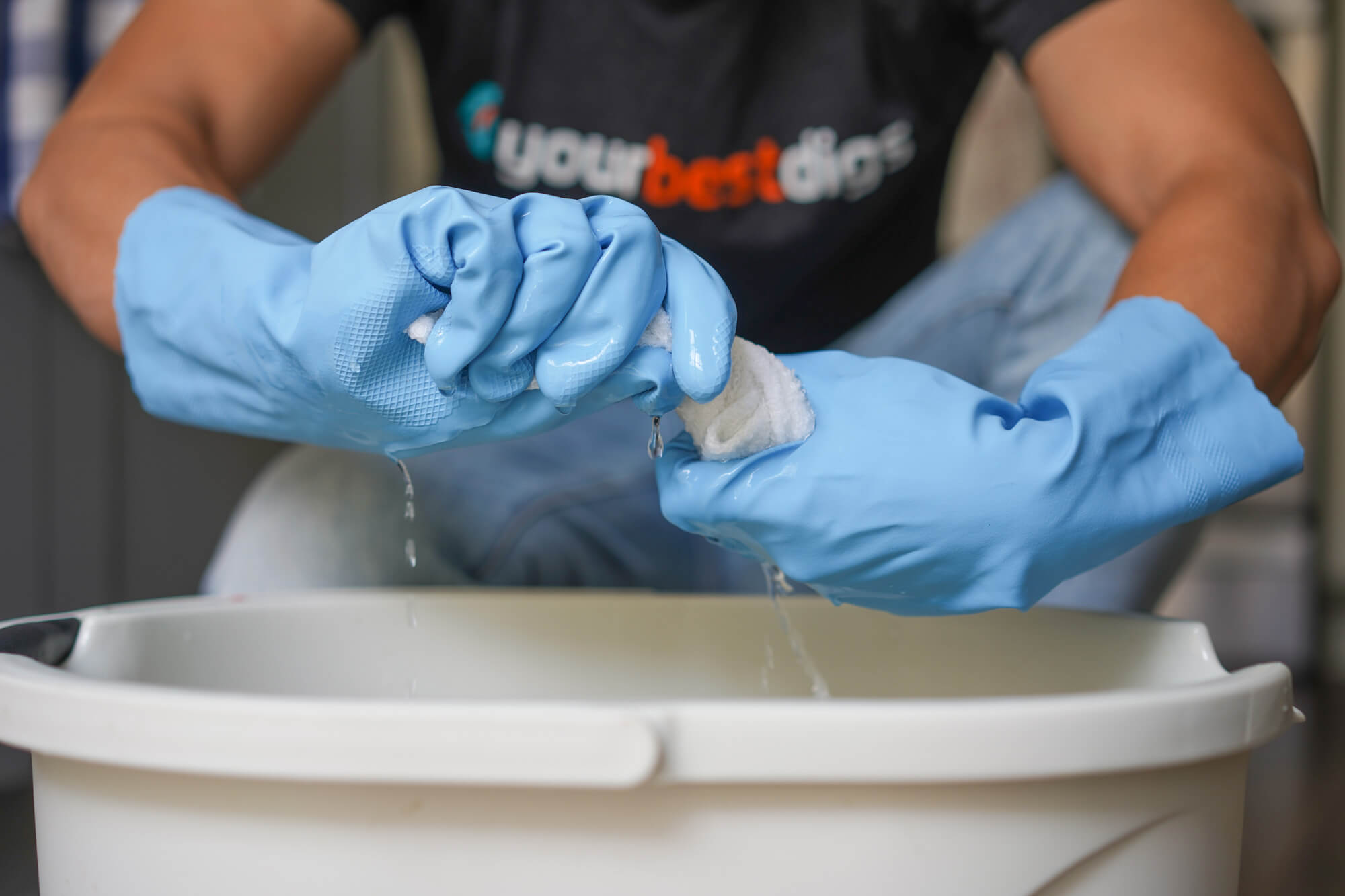
The age-old question is what cleaning products are safe for hardwood floors, but there isn’t a one-size-fits all cleaning solution.
You’ll want to consult with your hardwood floor manufacturer to learn what products are best fit for cleaning your floors specifically. If you’re unable to consult with your manufacturer or a professional, select a cleaning product that is only used for cleaning hardwood floors.
Some homeowners recommend cleaning hardwood floors naturally with vinegar and water, but if you opt to make your own natural solution, try it out on an inconspicuous spot in the corner of a less frequented room or under a piece of furniture that you don’t plan on moving (such as a refrigerator). Vinegar is known to dull some hardwood flooring finishes, so don’t make the mistake of using a product that your floors are new to before testing it first.
If you have waxed wood floors, it’s recommended to avoid any water or solution completely. Instead, regularly sweep or vacuum, and run a microfiber cloth across the floors to remove any fine dust particles.
Step-by-step for cleaning hardwood floors
Be confident that you’re cleaning your hardwood floors the right way to keep them looking as good as new for years.
Pick up loose dirt
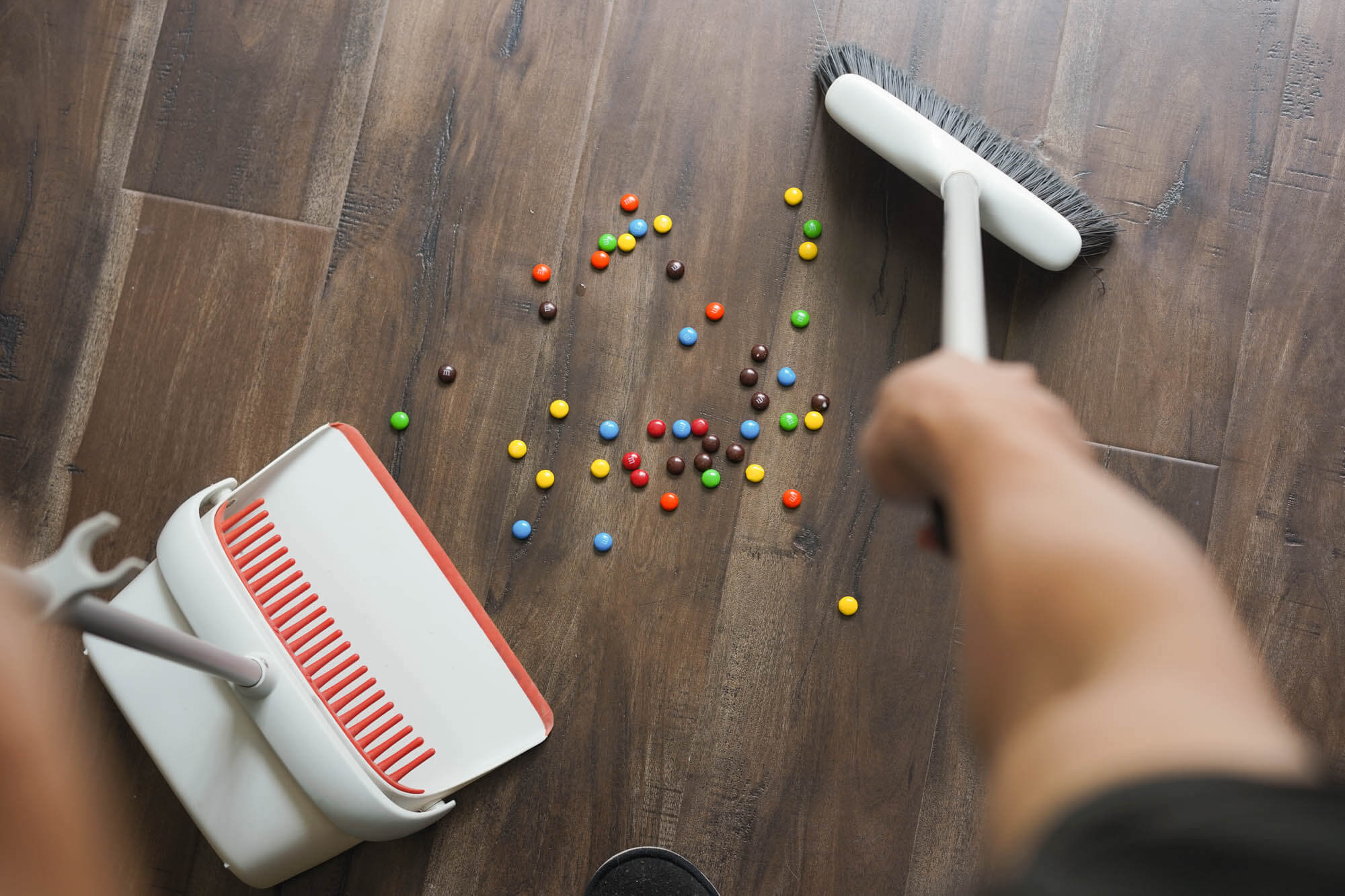
Use a soft-bristled broom to sweep your floors against the grain to remove any loose dirt or dust from your floor. If you have pet hair or hard-to-reach spots, you can also use a vacuum for this step, but make sure only to use a soft floor nozzle as carpet beaters can damage hardwood finish.
Mop using a damp rag with cleaning solution

Use a cleaning solution that best suited for your type of hardwood floors and dampen (not soak) a rag and run it along your floor. Cover the entire floor, but don’t allow too much time to pass so it doesn’t dry.
Mop using a damp rag with water
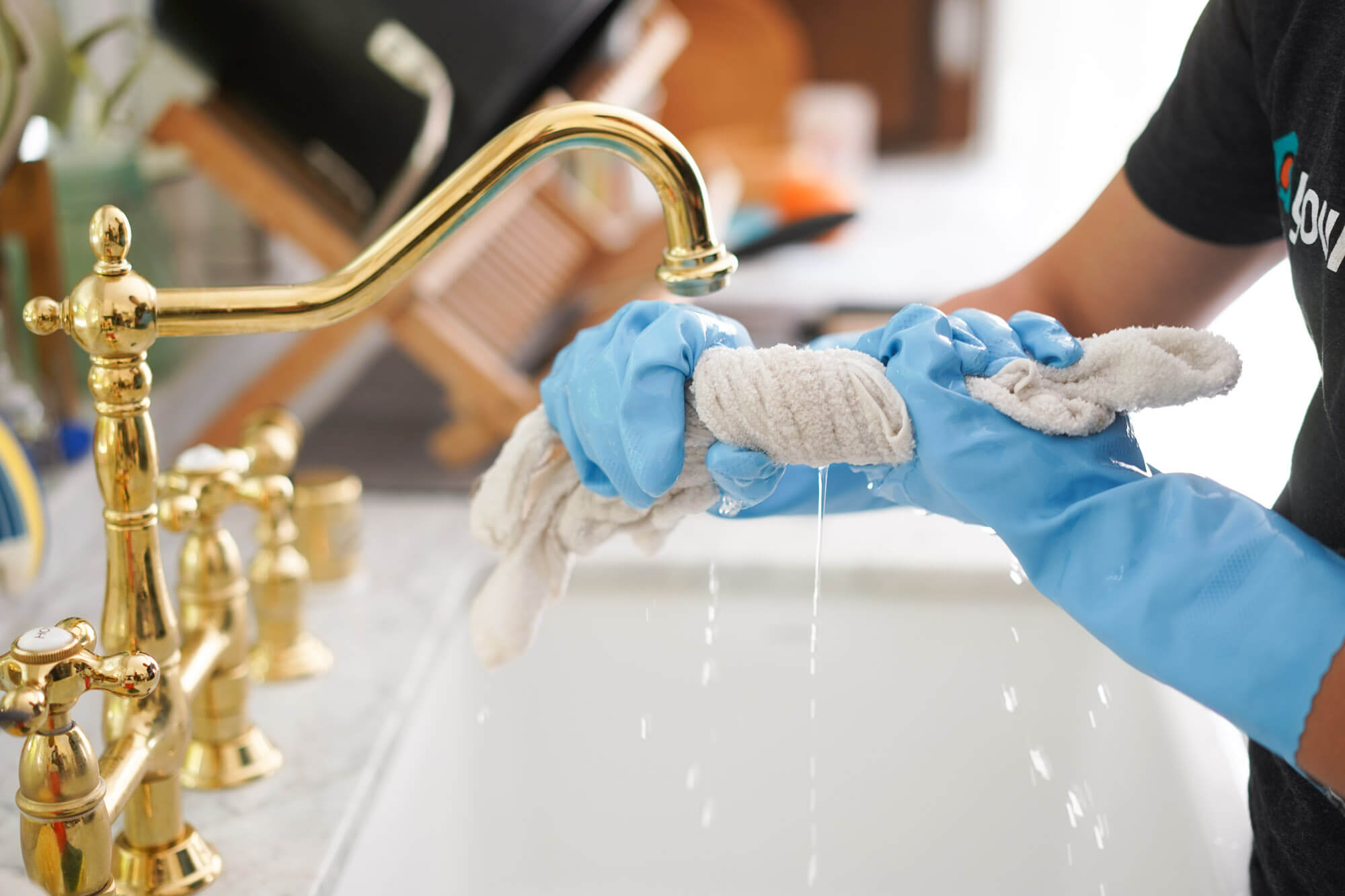
Ring out the rag and dampen with water to pick up the cleaning solution that’s sitting on the floor.
Pick up moisture with a dry rag
Use a dry rag or mop to soak up any excess moisture on the floor. Any moisture left behind could damage the floor.
Repeat regularly
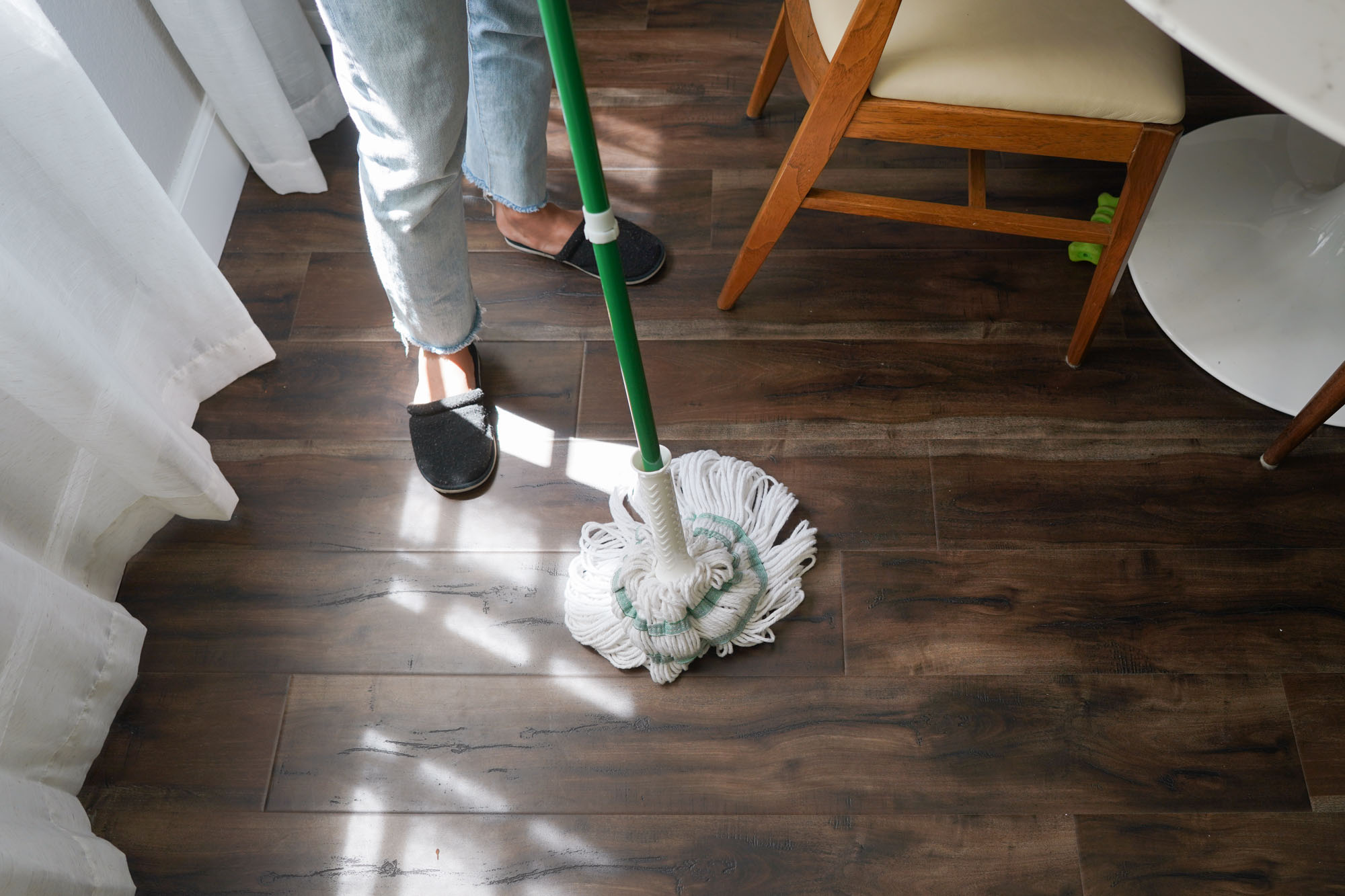
Don’t allow your floors to build up with dirt and grime. It’s recommended to mop floors in high-traffic areas, such as the kitchen, living room and family room, on a biweekly basis. You can mop less-frequented rooms on a monthly basis.
How to remove stains from hardwood floors
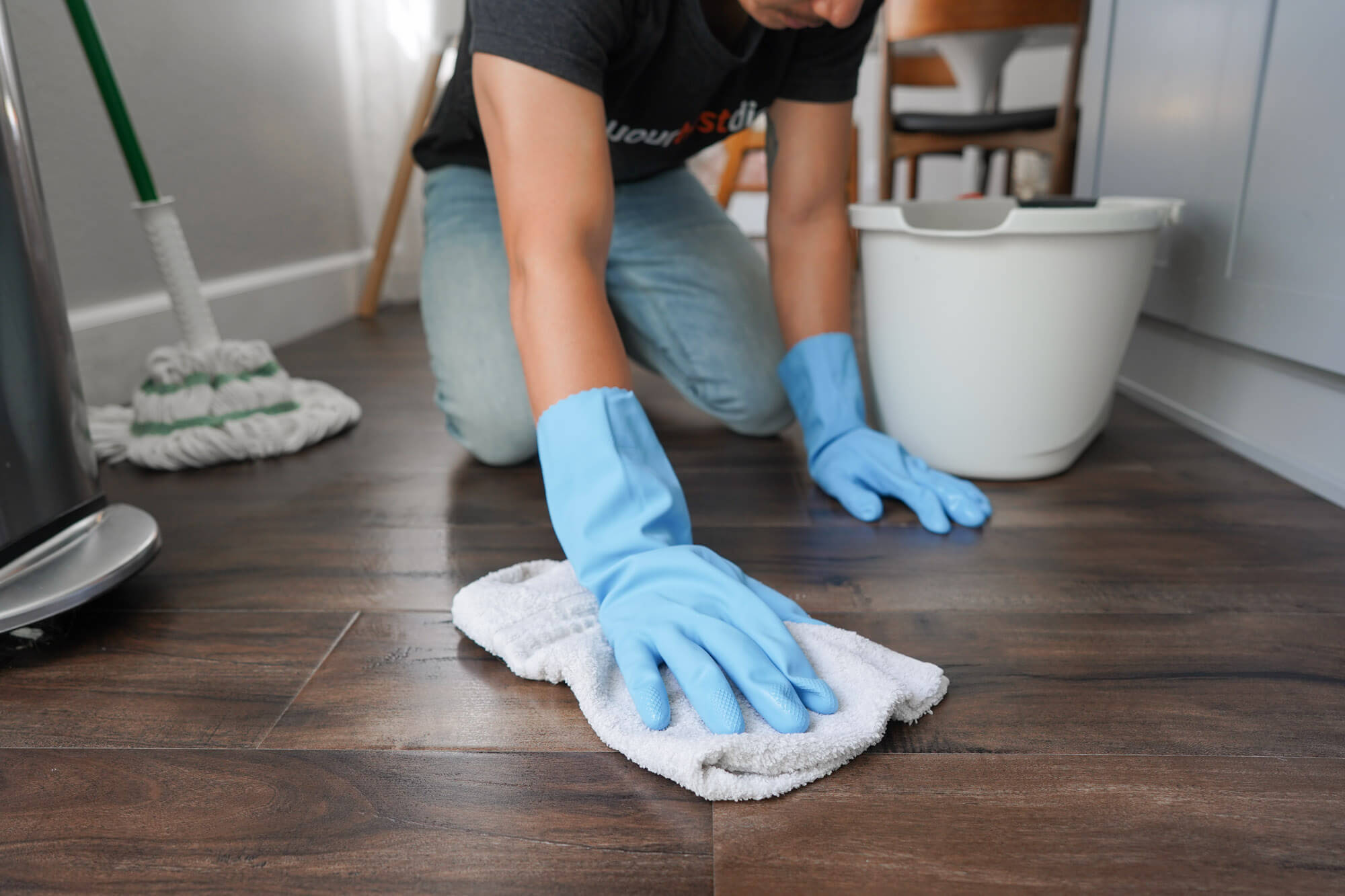
The last thing you want to do if you have a stain on your hardwood floor is scratch the surface and damage the sealant. Be gentle and take your time with stain removal as your flooring can be delicate.
Watermarks. If you have a watermark on your floor, allow it a couple of days to dry to see if it will clear up on its own. If not, determine how your hardwood floor is finished: with wax, which penetrates the wood or with surface finish, which seals the top layer of the wood.
For waxed floors, lightly rub the stain with #000 steel wool and wax. If this doesn’t work and the stain is deeper, lightly sand the area, then stain, wax and buff the area by hand. If you’re not confident with sanding down your floors yourself or do not have the tools, you may need to consult with a professional who specializes in sealing hardwood floors. If your floor is treated with surface finish, use a cleaner that is specifically used for cleaning that type of finish.
If your hardwood floor is unfinished, consult with your manufacturer as water or hardwood cleaners could damage the wood.
Non-greasy spills. You can typically remove non-greasy food or drinks from surfaces by simply combining dish detergent and warm water and applying it with a cloth in a circular motion. Similar to mopping, make sure to remove the solution with a rag dampened with water and then a dry cloth.
Greasy spills. We get it. It’s easy to spill oil, butter or other greasy properties on your hardwood floors without noticing. If this has happened to you, soak a cotton rag in hydrogen peroxide and allow it to sit on top of the stain for 5-10 minutes. Repeat until the stain has been removed. If you’re unsure how hydrogen peroxide and your hardwood floors will interact, test it on an inconspicuous section of your floor beforehand.
How to protect your hardwood floors
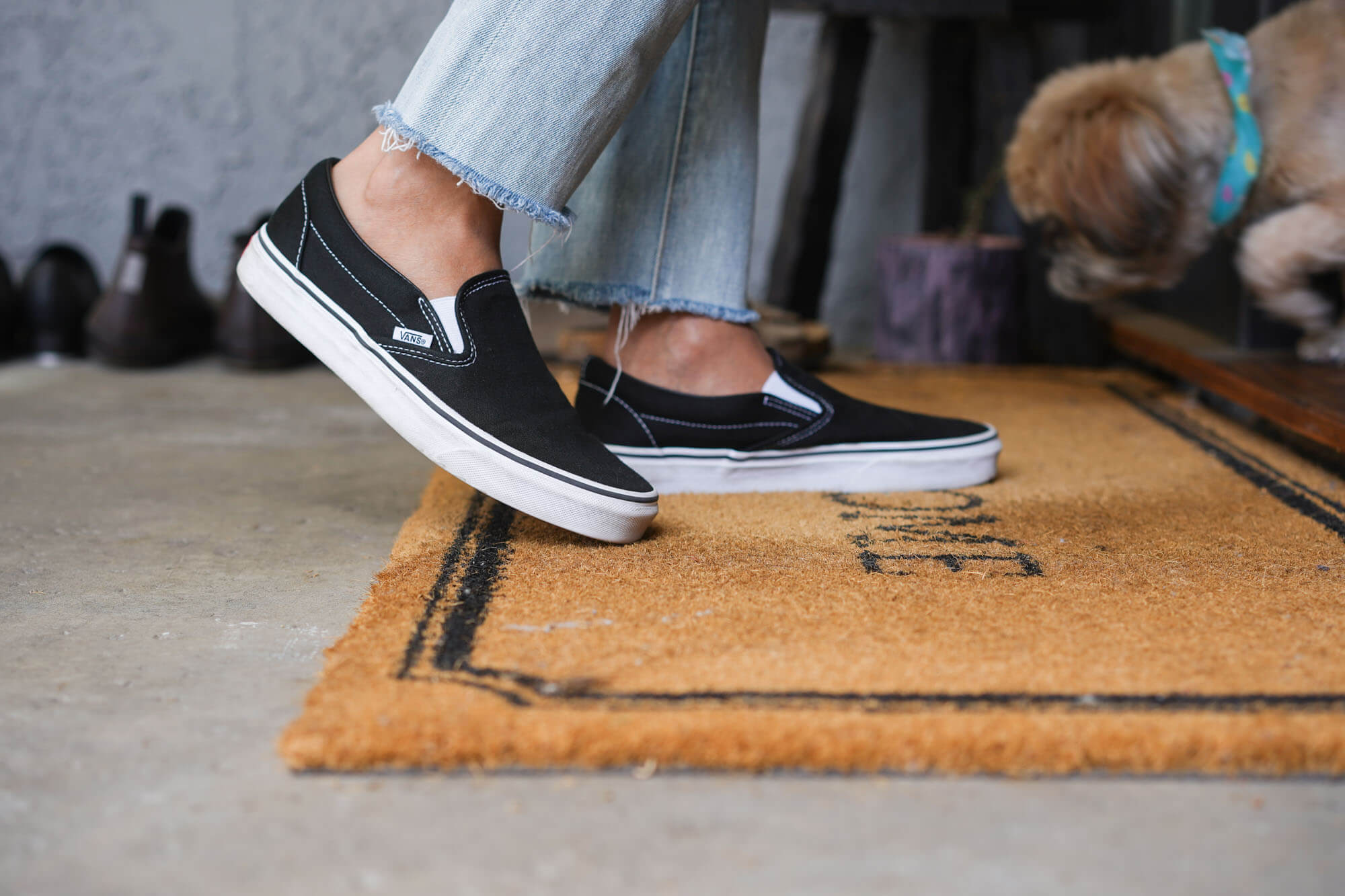
Remove shoes. Create a policy to remove shoes at the door so no one brings in any outside dirt or gravel.
Use tough-bristled doormats. Entering the house with dirty shoes is the main way to track in dirt. If you allow shoes in your home, place tough bristle door mats at every entrance to avoid tracking in too much dirt.
Use floor protectors. It’s recommended to use floor protectors under heavy furniture to avoid from damaging your hardwood floors. If dirt or dust gets under your furniture without protectors, it could aggravate and scratch your floors.
Routinely clean. Clean kitchen floors weekly and other areas of the house every 3-4 weeks to avoid any build up.
Maintain and refinish. If your floors are damaged far beyond what cleaning can improve, you might be due for a refinishing. It’s common to refinish hardwood floors every 3-4 years to keep them in great shape.
Don’t ignore a mess. If you spill something, even if only a drip of water or ice cube, you’ll want to clean it up immediately as added moisture can quickly damage your floor.
Lift heavy items. If you have heavy equipment in your home for a remodel or furniture that you’re moving around, make sure not to drag it across the floor as it can damage your hardwood floors.
Whether you’re redoing a section of your home and have heavy equipment in and out of the house, or have purchased a new piece of furniture for your home, make sure not to drag anything across your hardwood floor as it could cause irreversible damage.
Now that you know how to clean, remove stains and protect your hardwood floors, your floors are bound to remain in great shape for years to come.
Sources: BHG | The Flooring Girl
